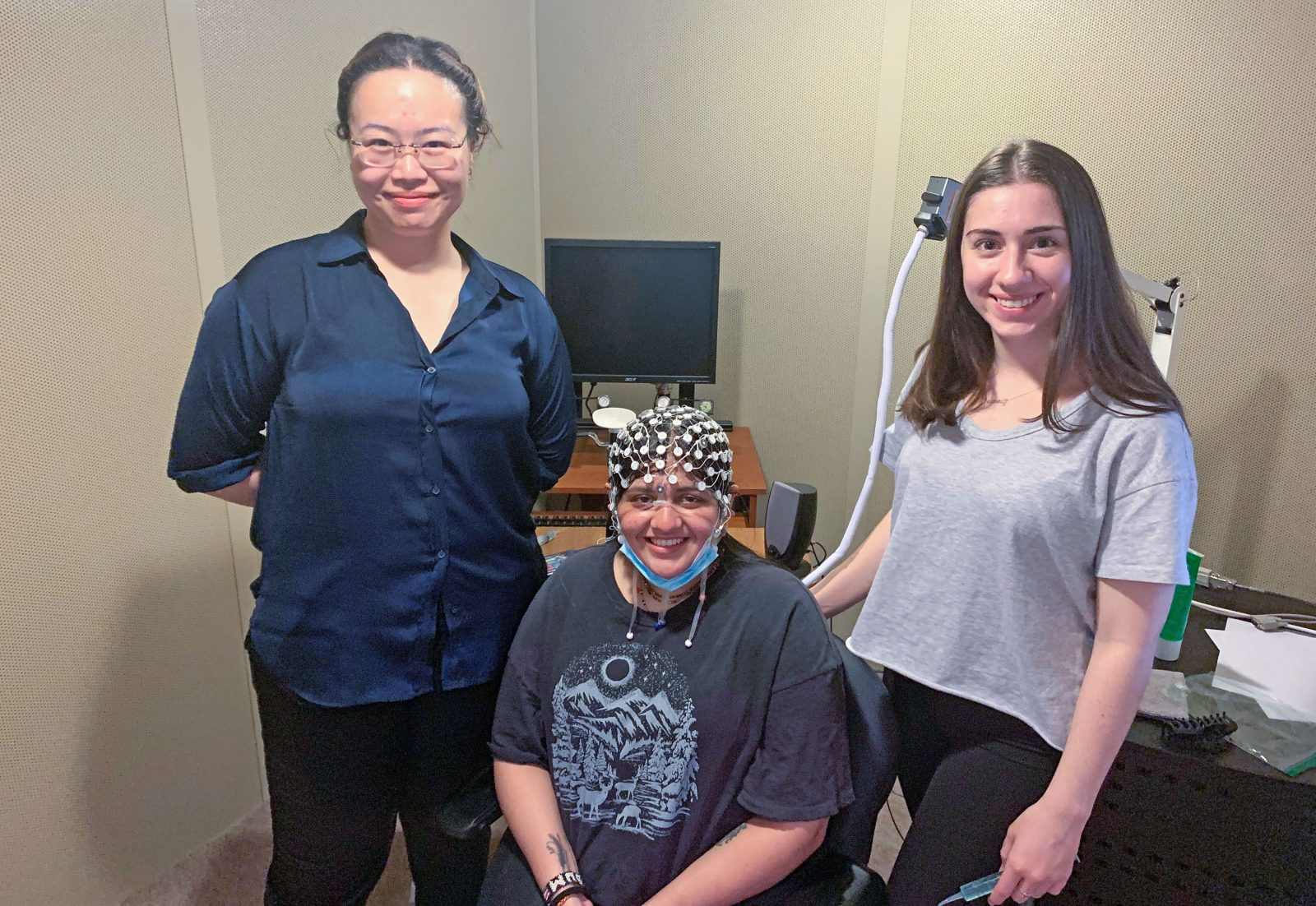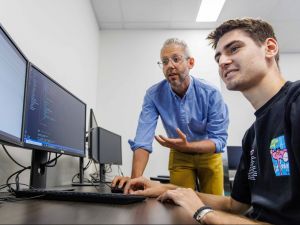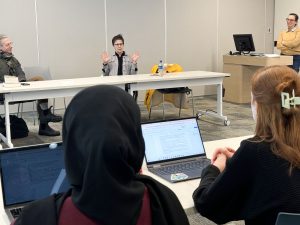 Brock students Zihang Bu, Masum Patel and Lauren Stepien demonstrate the electroencephalogram set-up for a brain activity study that is actively seeking participants.
Brock students Zihang Bu, Masum Patel and Lauren Stepien demonstrate the electroencephalogram set-up for a brain activity study that is actively seeking participants.Participants in a new Brock study will be able to answer the question “what’s on your mind?” in an unusual way — with an image of their brain waves.
Brock researchers, working in collaboration with the Pathstone Children’s Mental Health Research Institute at Pathstone Mental Health, are recruiting young people aged eight to 17 for a study on the neural basis of attention control, anxiety and how different parts of the brain engage while young people think and solve problems.
The study will look at brain activity while young people focus their attention, what changes as they get older and any differences in the brain that may relate to the ability to pay attention and keep calm.
To provide data, participants will wear an electroencephalogram (EEG) net on their head while doing activities on a computer. The EEG captures real-time brain activity that researchers can later analyze.
The study is funded in part by the Brain Canada Foundation and co-led by Associate Professor Ayda Tekok-Kilic and Assistant Professor Erin Panda in the Department of Child and Youth Studies, who are co-directors of the Developmental Neuroscience Lab (DNLab), and Professor Emeritus Sid Segalowitz of the Department of Psychology.
In addition to engaging with the community, the researchers will also engage with a broader community of scholars, as the data they collect will be shared in a database for researchers across Canada to use in new ways, too.
Panda says the study is related to previous work in the DNLab conducted with university students.
“Using the brain-based measures from our work with young adults, we’ve found evidence of difference in brain activity related to attention and impulse control,” she says. “Having a continuum on which to examine these brain responses gives us a great basis to now be working with children who may be at the more extreme ends of the continuum, including those diagnosed with ADHD or anxiety.”
Panda says the goal of the study is mainly to collect information, but long term, there may be implications for treatment and a better understanding of how real-life behaviours are related to brain activity — something that may help parents better understand their children and may help children understand themselves.
“That’s really the goal — if we can gain a new insight into how people think, then the knowledge is power,” says Panda. “If we can provide information not just to clinicians but also to kids about how they process information, it can help them understand how their brain works and let them know that rather than being hard on yourself, here’s a way of understanding yourself.”
There are no risks associated with EEGs, nor are there any risks associated with participating in the study.
All participants and their parents will receive a total of $50 in gift card honoraria, as well as a picture of their brain activity shown by the EEG.
Anyone interested in more information should contact the lab team at dnlab@brocku.ca









